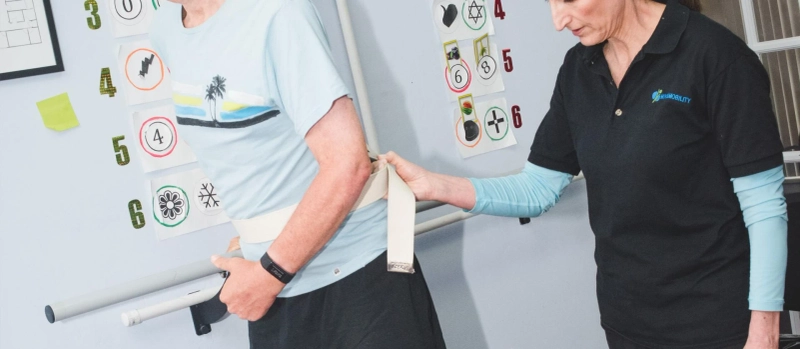Falls, common among nursing home residents, are linked to frailty, functional disability, and mortality. Fall prevention in nursing homes is a remedy because Falls that result in injury or medical complications are costly. Fall prevention for seniors is important as they develop a fear of falling again once they have fallen. Because of this fear, movement is restricted, increasing the chance of acquiring a comorbid disease such as pressure injury, pneumonia, or depression due to feelings of isolation. As a result, falls impact the quality of life of senior citizens; one good way is fall prevention at home for the elderly.
Falls are prevalent among the elderly.
At least one-third of persons aged 65 and up are predicted to fall one or more times per year. Even though many of these falls do not result in damage, they can result in:
Fractures of the hip and wristRib fractures and other chest injuriesDislocations of the hip and shoulderFear of falling can result in a loss of confidence and restricted activities due to head injuries, abrasions, bruising, and sprains.How to do fall Prevention in Nursing homes?
The Annals of Long-Term Care published a discussion on the measures of fall prevention in nursing homes that agreed that there are various variables in nursing home falls and that avoiding them required an interdisciplinary approach.
The authors offer many general measures for fall prevention in nursing homes, lowering the frequency of falls in nursing homes and establishing why a fall happened. They are as follows:
They prevent fainting, which is frequently caused by a fast drop in blood pressure after quickly getting up. A variety of medications can also cause syncope. Patients should be examined for a tendency to black out or faint and inform staff members. They recognize the need to relocate. Residents who have been seated for an extended period may experience pain or discomfort, as well as a desire to get up and walk around. In addition to supporting individuals who require assistance getting up, staff should ensure that immobile residents are comfortable and engaged so that they do not feel compelled to get up.Make sure you're wearing the right shoes. Residents should be urged to wear rubber-soled athletic shoes or lace-up or strap-on shoes that fit snugly, rather than slip-on shoes, instead of socks or slippers or going barefoot. Residents must be screened for gait issues, such as the inability to rise and clear the floor with each stride, making treaded shoes riskier.They are promoting physical activity. Fall prevention in nursing homes needs daily exercise programs, and an overall active lifestyle can help seniors improve their balance, strength, and gait, reducing the risk of falling. According to the authors, too many residents are allocated wheelchairs despite having minimal needs, and this dependency causes their endurance, strength, and balance to deteriorate due to neglect.How to do Fall Prevention at home for the elderly?
With growing age, fall prevention for seniors becomes increasingly crucial. As you get older, physical changes and health conditions — as well as the medications used to treat those conditions — increase your risk of falling. Falls are, in fact, a primary cause of harm among the elderly. Still, you don't have to live your life in terror of falling. Consider some basic fall prevention at home for the elderly methods instead. It does not have to entail a comprehensive home renovation. You can do fall prevention at home for the elderly with a few simple improvements. Experts recommend the following tips for fall prevention for seniors to avoid falls at home:
Take care of the mess. Keeping your home clean and tidy is the simplest way to avoid falling. Remove all clutter from hallways and stairwells, such as stacks of old newspapers and magazines.Tripping dangers should be repaired or removed. Home fittings can sometimes cause falls, resulting in back discomfort and other injuries. Look in every room and hallway for anything like loose carpet, slick throw rugs, or protruding timber flooring. Then, for more effective fall prevention for seniors, repair, remove, or replace those objects.Install Handrails and grab bars. These safety gadgets are essential for safely ascending and descending stairs, using the toilet, and stepping into and out of the bathtub. If required, enlist the assistance of a handyman or a family member.Wearing loose garments is not recommended. You want to feel at ease at home, but loose clothing can make you more likely to trip. Choose a better-fitting dress that has been correctly hemmed so that it does not bunch up or drag on the ground.Make sure it's lit properly. Another important hazard is insufficient lighting. Install brighter light bulbs where needed, especially in stairwells and narrow hallways, to make your home more accessible to the elderly. For improved night-time direction, install nightlights in bedrooms and restrooms.Put on sensible footwear. As part of your strategy for fall prevention at home for the elderly, consider altering your footwear. You can slide, stumble, and fall in high heels, floppy slippers, and shoes with slick soles. Walking in your sock feet might also be dangerous. Instead, put on shoes that are well-fitting, robust, and have non-skid soles. Sensible footwear may also help to alleviate joint pain.Examine your surroundings for potential fall hazards. Boxes, newspapers, electrical cords, and phone cords to make your home safer should all be removed from walkways. Remove loose rugs from your home or secure them with double-faced tape, tacks, or slip-resistant backing. Repair any loose wooden floorboards or carpeting as soon as possible. Clean up any spilled liquids, grease, or food right away.Make use of assistive technology. To keep you stable, your doctor may prescribe that you use a cane or walker. Other assistive devices may also be useful.

